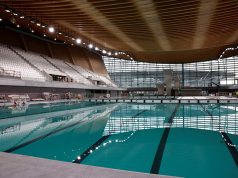
A Facebook user recalled a story where their tour guide in El Nido, Palawan confronted a Chinese tourist who was consistently asking about the “islands owned by China” in the area.
The user, identified as Joseph Holandes Ubalde, shared their tour guide’s experience as a way to remind Filipinos that they should “educate” the Chinese instead of being angry and calling them “chekwa,” a colloquial derogatory term referring to a Chinese.
On our trip to El Nido last July, our tour guide told us a story about a "racist" and "rude" Chinese tourist he…
Posted by Joseph Holandes Ubalde on Tuesday, November 6, 2018
Ryan, the tour guide, overheard a male Chinese tourist asking another tour guide about the “islands owned by China” and where they can be located.
The tourist pointed to the various islands found in El Nido.
He then requested the tour guide to take them there. “Is it far from here? I want to see our islands,” the Chinese tourist said.
Ryan, according to Ubalde, “couldn’t stand what he had heard” and went over to the tourist.
“He told him no island in Palawan belongs to the Chinese. He also asked him to say sorry,” Ubalde narrated.
Ryan also confronted the tour guide in question and exclaimed, “Kayo din naman kasi kinukunsinte niyo! Kaya tayo minamaliit eh, kasi hinahayaan niyo lang!”

He went back to the tourist and said, “If you want to see Chinese islands, go back to China!”
The Chinese tourist apologized and then went back to their boat in a hurry.
Ubalde praised Ryan for directly confronting the tourist instead of hurling “racist comments.”
“The Chinese may not have a good reputation abroad as visitors to foreign countries but let this be a teaching opportunity for us Filipinos to educate them,” Ubalde wrote.
Many users ‘liked’ the post but there were others who commented that Filipinos should not stop being assertive of their rights.
Territorial tensions between China and the Philippines’ Palawan
Reports as far back as 2011 note that China has been claiming territories near Palawan in light of the West Philippine Sea maritime dispute.
China in March 2011 harassed a vessel owned by the Department of Energy that conducted research within the vicinity of Reed Bank located 250 kilometers off Palawan.
Reed Bank is within the country’s exclusive economic zone but countries such as Vietnam and China have been claiming it since it is part of the Kalayaan Island Group.
The Kalayaan Island Group is part of the Spratly Group of Islands that is the subject of dispute among China, the Philippines and other countries.

Two months after the harassment, China protested the Philippine government’s plan to explore oil and gas in an area located 80 kilometers northwest of Palawan.
Chinese officials claimed that it falls under their “indisputable sovereignty.”
By July 2012, a Chinese navy frigate was spotted 60 nautical miles west of Palawan within the same month.
Shortly after, it was discovered that Chinese poachers have harvested corals and caught sea turtles in the waters of Balabac, a town located in the province’s southernmost tip.
The Philippines in January 2013 filed a complaint before the Permanent Court of Arbitration against China when the latter took control of a reef located 140 miles from the Philippines coast.
They also accused China of violating international law when it built artificial islands from several reefs near Philippine waters.
While China lost the case, it has rejected the tribunal’s ruling and continued to assert their claims by building more artificial islands and militarizing areas within the Philippines’ exclusive economic zone.









